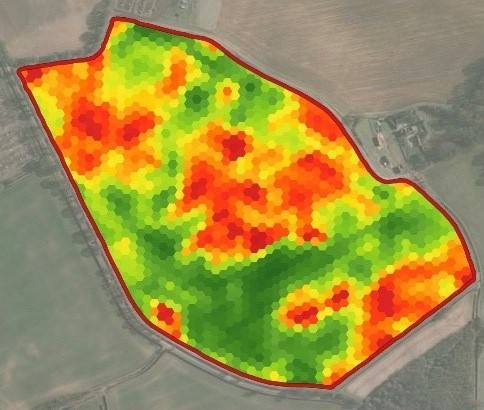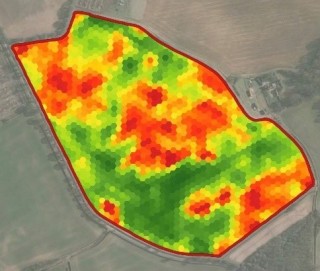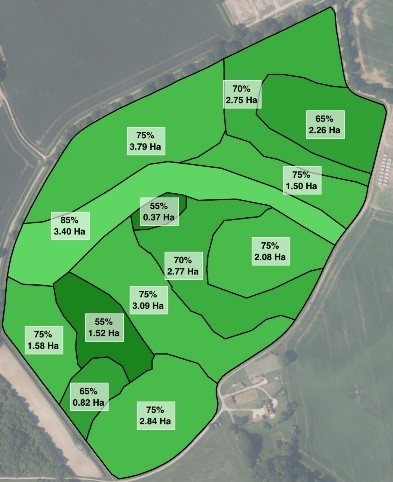Variable rate seed: The ability to adapt
As I begin to think about variable rate seed, I can't help getting out of my head that for the past year there has been a lot of talk of change and adapting within agriculture. The more I thought about it, I concluded (probably later than many others) that agriculture has always been a case of adapting whether it be to new products, new machinery, new guidance or the ever-changing weather.
This need for adaptability is never truer than when it comes to drilling, which is actually one of the lesser discussed benefits of variable rate seed. With that in mind, I thought in this blog I'd take a look at how variable rate seed can allow you to quickly react and adapt to produce the best crops.
Variable rate seed – the why
Firstly, I wanted to start by briefly visiting the premise behind SOYL's variable rate seed service. One of my colleagues explains it as the "equivalent of building the foundations of a house" - if you lay those foundations unevenly then you will end up with a crooked building. Similarly, if you don't take into account your soil variation and plant establishment when drilling, you will end up with an uneven (or crooked) crop. Further to just providing a more even crop, variable rate seed assists with getting that holy grail of 'optimum population'.
How can variable rate seed help you adapt?
Let's have a look at some areas that you may need to adapt during and before drilling season.
Past crop performance
Before you've thought about hitching the drill up to the tractor, there is the potential to adapt your establishment maps based on previous seasons' data and the knowledge of your fields. For example, if when you're evaluating past yield maps, biomass images or looking back at your spring plant counts and you notice areas of thin crop or poor yield, you can easily adapt your establishment scenario to address those areas this year. It's a case of simply dropping down your establishment percentage to subsequently increase the seed rate in those areas next season.
Ordering and supply
We all know that the Thousand Grain Weight (TGW) of seed can vary from year to year and within the same season. Accounting for and adapting to it is made easier if you are creating your plans within MySOYL. When you make draft plans ahead of the season, you can choose to work in total number of seeds required. You can then place an order with your seed merchant to take the guess work out of how many kilos you may need if TGWs vary. Plus, you can calculate your requirement based on your target plants/m2, that way you know you'll be ordering enough seed to achieve your 'optimum population'. Alternatively, it is easy to adapt your plans to a new TGW if you need to without having to break out your calculator.
Conditions
The best laid plans can easily fall by the wayside when it comes to drilling and you have to adapt to the conditions. Whether it be that you're later getting on than you'd like or you've had a last minute variety or even crop change, the ability to create multiple drilling establishment scenarios means you can quickly adapt to later drilling by switching to a scenario with lower establishment rates. Alternatively, you may choose to just nudge up the rates in your existing plan. With the ease that you can create new drilling plans, even a change of variety or crop can be quickly and easily dealt with.
Weather
The weather will always be the biggest factor that you have to adapt to during drilling, whether it has pushed back drilling as I've mentioned or is likely to create a wetter, cold seedbed post drilling. Adapting your drilling plan in response to changing conditions will give you the best chance of reaching that optimum plant population come spring.
Seasons
Drilling in spring is a different ball game to drilling in the autumn, so you should adapt your seed plans to account for that. Many of the growers we work with already have different spring and autumn establishment scenarios, giving them the ability to quickly switch and optimise their spring drilling plans.
Enhance your ability to adjust and adapt
Ultimately, building good foundations by having the right number of plants in the right places within your field gives you the best chance of a good yield, whatever the season may throw at you. With variable rate seed you enhance your ability to adapt and lay the best foundations for every scenario.
For more information on variable rate seed and how it could make you more adaptable speak to your local SOYL contact or get in touch.
As a subscriber, you’ll receive email alerts each time a new blog is published so you can always stay updated with the latest advice and insights from our experts






Comments